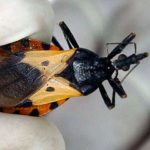A groundbreaking study has unveiled a promising new approach for predicting the severity of triple-negative breast cancer (TNBC), one of the most aggressive forms of breast cancer. Researchers at the University of Utah’s Huntsman Cancer Institute, a leading cancer research center in the Mountain West region of the United States, have made significant strides in improving the prognostic tools for this particularly challenging disease.
TNBC, which accounts for around 10-15% of all breast cancer cases, is notoriously difficult to treat. Unlike other types of breast cancer, it does not respond to hormonal therapies, leaving chemotherapy and surgery as the primary treatment options. However, predicting whether the cancer will recur after treatment has been a major challenge for oncologists.
In a study published in JCO Precision Oncology, the researchers describe the development of a patient-derived xenograft (PDX) model, a method that involves placing a patient’s tumor into a mouse. By observing the tumor’s growth in the PDX model, the researchers could better assess the aggressiveness of the cancer, offering a more accurate prediction of its likelihood to recur.
This novel method surpasses existing prognostic models, which often fall short in predicting TNBC recurrence. The ability to accurately determine the aggressiveness of TNBC early on could revolutionize treatment planning, providing doctors and patients with crucial information for making more informed decisions.
Co-author Cindy Matsen, head of the Breast and Gynecologic Disease Center at Huntsman Cancer Institute, highlighted the potential real-world benefits of the study. “This research holds significant potential to personalize treatment plans for individuals facing recurrent triple-negative breast cancer,” Matsen said. “By using PDX models, we can test specific drugs and tailor treatments more effectively for each patient.”
One of the key findings of the study is that tumor growth in the PDX model is a strong indicator of how aggressive the cancer may be in the patient. Tumors that grow rapidly in the PDX model often correspond to highly aggressive cancers in humans, which are typically harder to treat and more likely to recur. This insight provides a critical window for oncologists to intervene with more targeted therapies.
The Huntsman Cancer Institute team believes their approach could have a direct impact on patient care. The use of PDX models allows for the testing of new therapies in a controlled environment, giving doctors the ability to observe how specific drugs work on a patient’s individual cancer before deciding on the best course of action.
With TNBC being such a difficult cancer to manage, the development of more accurate predictive tools could change the landscape of how doctors approach this disease. This research opens up new avenues for early intervention and personalized treatment, potentially improving outcomes for patients who currently face uncertain futures.
As the fight against TNBC continues, the work being done by the team at the Huntsman Cancer Institute offers a beacon of hope for those affected by this aggressive form of cancer.












